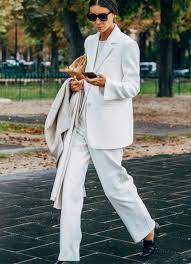
Athleisure Allure: Fashionable Fitness Wear for Active Lifestyles
Apparel is far more than fabric sewn together it’s a vocabulary that communicates identity, standing, and cultural affiliations. Learning the intricacies of fashion can empower people to decode this vocabulary and then make well informed sartorial selections. Here’s a thorough help guide to understanding the language of clothes:
1. Symbolism and Semiotics: Just like phrases convey that means, clothes carries symbolic importance that differs across ethnicities and contexts. Knowing semiotics—the review of indicators and symbols—helps understand the invisible connotations behind clothing choices.
2. Social Signifiers: Apparel functions as a societal marker, highlighting practices, beliefs, and ideals particular to particular modern society or community. By recognizing cultural signifiers, people can navigate diverse interpersonal contexts with level of sensitivity and respect.
3. Energy Dynamics: Fashion often intersects with power dynamics, signaling societal hierarchies, power, and opportunity. Specific clothing designs and manufacturers are related to wealth, position, and exclusivity, shaping perceptions and interaction in culture.
4. Fashion Subcultures: Above well-known trends, fashion includes many subcultures with unique looks and rules. From punk rock rock to streetwear, these subcultures give places for self-manifestation and belonging beyond the well-known.
5. Fashion as Personal identity: Apparel performs a crucial function in shaping personal personal identity and personal-appearance. By selecting clothes that resonate with their beliefs and ambitions, folks show their particular identities and assert their location on the planet.
6. Fashion and Gender: Gender identity affects clothing alternatives, with fashion becoming a tool for personal-expression and sex efficiency. Splitting totally free of conventional sex norms, many individuals embrace sex-fluid styles that reflect their real selves.
7. Fashion from the Computerized Grow older: Social media marketing and electronic digital platforms have transformed the fashion market, democratizing entry to developments and reshaping consumer habits. Influencers and web-based communities drive tendencies, creating new avenues for fashion inspiration and concept.
8. Fashion Literacy: Establishing fashion literacy involves honing the ability to critically examine and understand clothes options within wider sociable, ethnic, and traditional contexts. By growing this expertise, men and women can understand the intricacies of fashion with confidence and discernment.
To summarize, Clothes can be a highly effective kind of interaction that transcends vocabulary limitations and echoes quantities about personality, customs, and modern society. By understanding the language of clothes, individuals can funnel the transformative strength of fashion to convey themselves authentically and get around the world with knowledge and awareness.
Proudly powered by WordPress. Theme by Infigo Software.